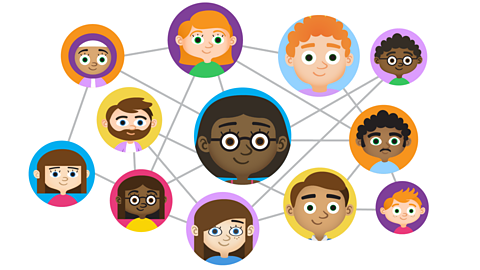Computers and information
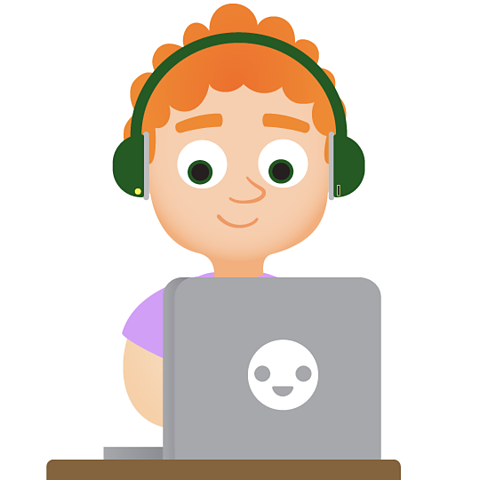
We use computerA device that processes information by following a set of rules called a program., computing devices and computer systemA series of connected devices controlled by a computer. in many parts of our lives. They may look very different, and carry out many different types of tasks, but all computers basically work in the same way.
They work by receiving, storing, processing and sending out information.
- Information the computer receives is called inputData that is sent to a program to be processed.
- Information the computer sends out after processing is called outputInformation sent out from a computer device after processing.
The processing is done by the computer processorThe part of a computer that processes information and data to complete a task.. This is also called the Central Processing Unit or CPU.
The input and output information is stored in the CPU(Central Processing Unit) Another way of describing the computer processor. memory before and after being processed.

How does the CPU know what to do with the information?
Lists of coded instructions called programA sequence of instructions written in a coding language that a computer can understand. are stored in the CPU memory. The program will tell the CPU how to process the input information and what form to send the output in.
For example, we might use a keyboard to send some text input into the computer.
A program stored in the memory will tell the processor to turn the input into text output on the screen.
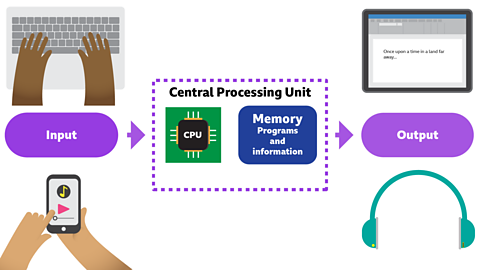
We might use a touchscreen to input a song choice by pressing an onscreen icon in a music app.
The program for the music app stored in the memory will tell the processor to turn the input into sound output through headphones or a speaker.
Computers and digital information
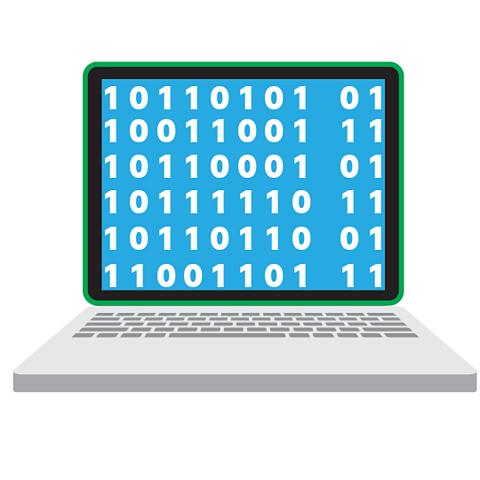
Computers can only work with digital information. Any input that a computer receives must be digitiseConverts information and data into a digital code that computers can read. so that the CPU can process it.
When information is digitised, it is converted into a digital code called binary.
Binary has two numbers: 0 and 1. It uses these to represent other letters and numbers.
Information that has been converted or digitised into binary code is called digital information.
Information that has not been digitised is often described as analogue.

How is information digitised?
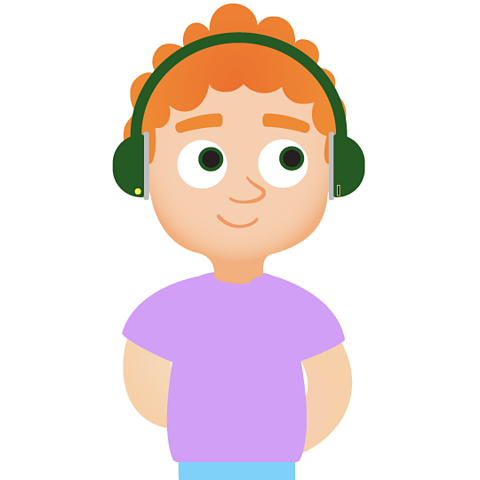
Input devices like keyboards, touchscreens, webcams and game controllers are designed and built to digitise the information they receive before sending it to the computer CPU for processing.
Some output devices output the processed information digitally, on a screen.
Some devices convert it back to analogue form, like a printout or sound.
Humans usually find it easier to understand analogue information!
Assistive technology
There are some input devices specifically designed to help people who may not be able to use devices such as keyboards or touchscreens to input information.
These devices might use sound or types of movement like head or eye movement, to control a pointer or on-screen keyboard. Some can even use our breath as an input method.
Output devices can turn text into speech for people with visual difficulties or speech into text for people with hearing difficulties. They can also give sound and visual alarms to warn and alert people to danger.
These devices are called assistive technology and help to ensure equal access to technology for people with disabilities and additional needs.
Professor Stephen Hawking

A famous scientist called Professor Stephen Hawking used special input devices that enabled him to carry on working. He battled motor neurone disease which severely limited his mobility and left him unable to speak.
Professor Hawking used an input device controlled by his cheek movements to choose the words he wanted to use.
A special output device turned those words into electronic speech that people could hear.

New types of input and output
Technology is changing and developing all the time, giving us new ways to use computing devices.
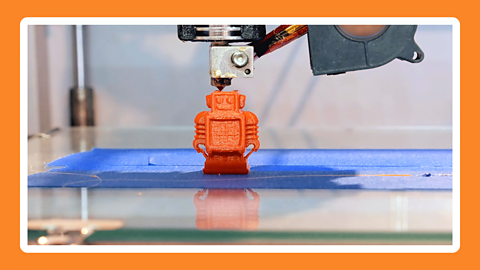
Image caption, Printers
Printers only used to print output as black and white text in one font style. Now printers can print colour photos with thousands of colours and even output solid 3D objects such as toys and medical items like replacement bones!
Image caption, Screens
Screens used to be big and bulky and were able to output small, blurry images. Now screens show output as super high-definition movies and realistic 3D games. We can have huge movie screens the size of a house, tiny watch screens, folding screens and even screens built into clothes!
Image caption, Shop checkouts
Shop checkouts used to need input from a type of keyboard called a keypad. Now we use light beams in scanners, to input information from barcodes on our items into a shopping checkout computer. The output is a final printed receipt.
Image caption, Security
Security used to involve remembering lots of difficult passwords. Now we can unlock our digital devices using our fingerprint as input information. Some security technology can even recognise the unique patterns in our eyes or our faces. They process this input and the output unlocks our devices.
Image caption, Sensors
Sensors are used to collect information automatically from the environment and use it as input for a computing device. Weather stations have sensors that collect information on temperature and wind speed and send it to a computer for processing. It is then output as a graph on a screen. Special sensors in the ocean can detect movement that might mean an earthquake or tsunami has occurred. They send it as input to computers that process it and send output to alert people of the danger.
Image caption, Satellite GPS
We can even get input from space! Information about our location is collected as input by our mobile devices from GPS satellites orbiting the Earth. Once the CPU in the mobile device has processed the location input, we get output on the screen that shows where we are on a map. The satellite input and the screen output can keep up with us, as we move around and we can track our position in real time.
1 of 6
Watch: Inputs and outputs
Find out more about inputs and outputs with this video from ±«Óătv Teach.
Activities
Computing - Dance Mat Typing. gameComputing - Dance Mat Typing
Build and test your computing skills with different levels of touch type challenges

More on Computer science
Find out more by working through a topic
- count18 of 24
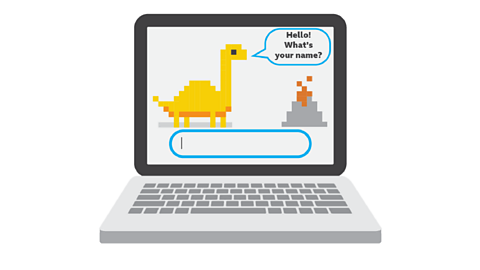
- count19 of 24
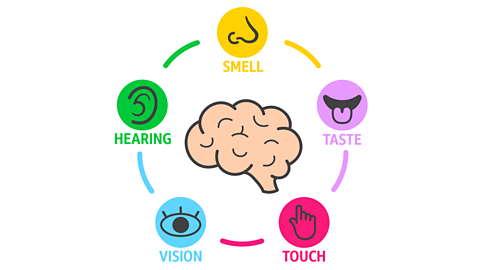
- count20 of 24
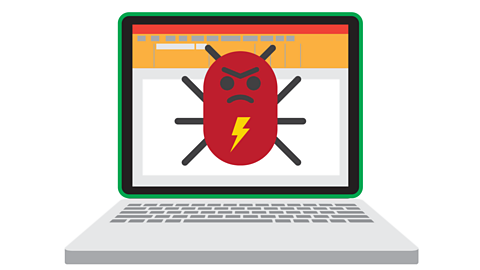
- count21 of 24
